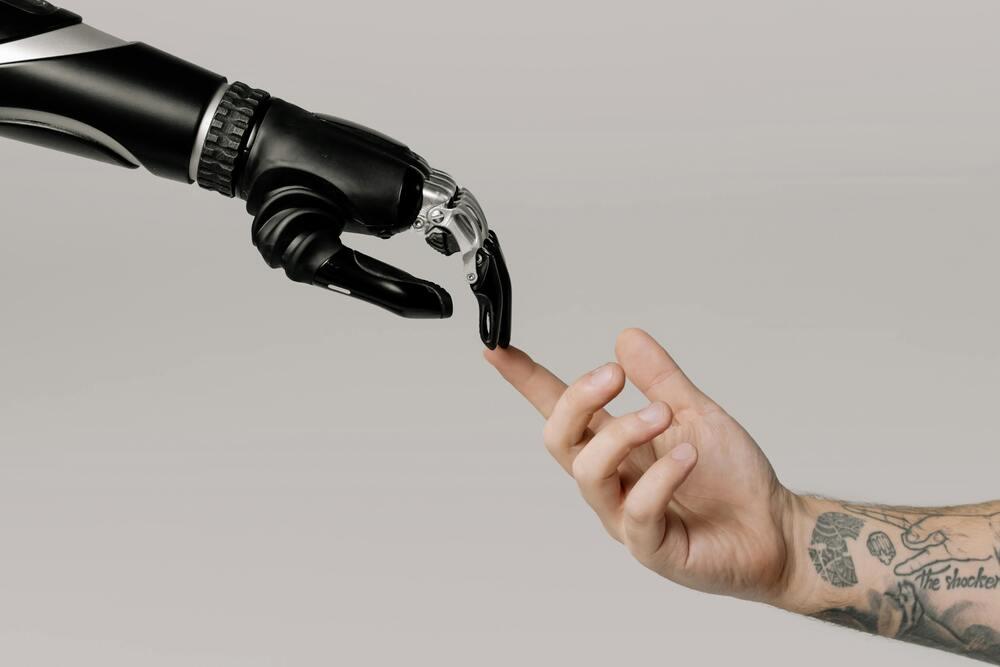In today's digital age, the ability to train your own AI model is more accessible than ever! ? Whether you're a hobbyist, a small business owner, or just someone curious about artificial intelligence, you can dive into the world of AI without needing a PhD. This blog will guide you through the essential steps, tools, and resources to get started on your AI journey. Let’s explore how you can harness the power of AI and create something amazing! ?✨

Understanding the Basics of AI
Before jumping into the training process, it’s crucial to understand what AI is and how it works. At its core, AI involves algorithms that can learn from data. The most common types of AI models include:
- Supervised Learning: The model learns from labeled data.
- Unsupervised Learning: The model identifies patterns in unlabeled data.
- Reinforcement Learning: The model learns by receiving rewards or penalties.
According to a recent report by Statista, the global AI market is expected to reach $126 billion by 2025. This growth highlights the increasing importance of AI in various sectors, from healthcare to finance. ?
Choosing the Right Tools
To train your own AI model, you’ll need the right tools. Here’s a table comparing some popular AI frameworks:
| Framework | Language | Ease of Use | Community Support | Best For |
|---|---|---|---|---|
| TensorFlow | Python | Medium | ⭐⭐⭐⭐⭐ | Deep Learning |
| PyTorch | Python | High | ⭐⭐⭐⭐⭐ | Research & Prototyping |
| Scikit-learn | Python | High | ⭐⭐⭐⭐ | Traditional ML |
| Keras | Python | Very High | ⭐⭐⭐⭐⭐ | Quick Prototyping |
| Fastai | Python | High | ⭐⭐⭐⭐ | Deep Learning for All |
Each of these frameworks has its strengths, so choose one that aligns with your goals. For a beginner-friendly option, Keras is often recommended due to its simplicity and ease of use. You can find more information about these frameworks on their official websites, such as TensorFlow and PyTorch.
Data Collection and Preparation
Once you’ve chosen your framework, the next step is to gather and prepare your data. Data is the backbone of any AI model. Here are some key statistics to consider:
- Quality over Quantity: A study by Google found that high-quality data can improve model performance by up to 50%.
- Data Diversity: Diverse datasets can reduce bias. For instance, a model trained on a dataset with varied demographics performs better across different groups.
Data Preparation Steps
- Data Collection: Use APIs, web scraping, or public datasets. Websites like Kaggle offer a plethora of datasets for various applications.
- Data Cleaning: Remove duplicates, handle missing values, and normalize data.
- Data Splitting: Divide your data into training, validation, and test sets. A common split is 70% training, 15% validation, and 15% testing.
Here’s a simple table to illustrate a typical data split:
| Dataset Type | Percentage |
|---|---|
| Training Set | 70% |
| Validation Set | 15% |
| Test Set | 15% |
Training Your Model
Now comes the exciting part: training your model! Here’s a step-by-step guide:
- Define Your Model: Use your chosen framework to define the architecture of your model. For example, in Keras, you can easily create a neural network with just a few lines of code.
- Compile the Model: Choose an optimizer (like Adam or SGD) and a loss function (like categorical cross-entropy for classification tasks).
- Fit the Model: Train your model using the training dataset. Monitor the performance on the validation set to avoid overfitting.
Monitoring Performance
It’s essential to track your model’s performance. Here’s a table showing common metrics used to evaluate AI models:
| Metric | Description |
|---|---|
| Accuracy | Percentage of correct predictions |
| Precision | Ratio of true positives to total predicted positives |
| Recall | Ratio of true positives to total actual positives |
| F1 Score | Harmonic mean of precision and recall |
Fine-Tuning and Optimization
After training, you may want to fine-tune your model for better performance. Here are some strategies:
- Hyperparameter Tuning: Adjust parameters like learning rate, batch size, and number of epochs.
- Regularization Techniques: Use dropout or L2 regularization to prevent overfitting.
- Data Augmentation: Increase the diversity of your training data by applying transformations like rotation, scaling, or flipping.
Deployment and Beyond
Once you’re satisfied with your model’s performance, it’s time to deploy it! You can use platforms like Heroku or AWS to host your model and make it accessible via an API.
Future Trends in AI
As you embark on your AI journey, keep an eye on emerging trends. Here are a few to watch:
- Explainable AI (XAI): As AI becomes more integrated into decision-making, understanding how models arrive at conclusions is crucial.
- AI Ethics: The conversation around ethical AI is growing, focusing on fairness, accountability, and transparency.
- AI in Edge Computing: With the rise of IoT devices, training models on edge devices is becoming more prevalent.
Conclusion
Training your own AI model is an exciting and rewarding endeavor that anyone can pursue! With the right tools, data, and a bit of creativity, you can create models that solve real-world problems. ? So, roll up your sleeves, dive into the resources available, and start your AI journey today! Remember, the future is bright for those who embrace the power of artificial intelligence. ?



